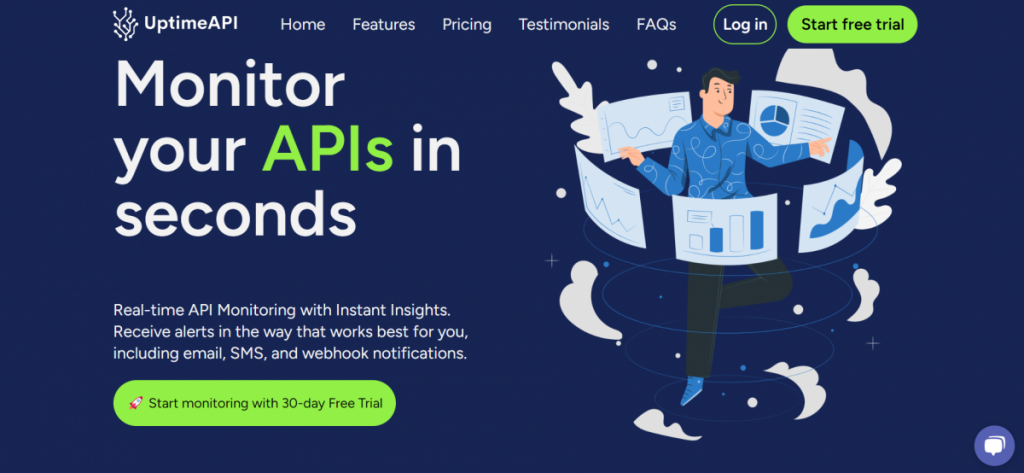In today’s digitally driven world, application programming interfaces (APIs) are the lifeblood of countless digital services and applications. These APIs enable seamless interactions between software components, making them essential for modern businesses. However, the availability and reliability of APIs are paramount. This article delves into the significance of API uptime monitoring and explores how it helps ensure uninterrupted digital operations. Also, you will discover the best tool to Get notified if an API Goes Down: Uptime API.
What Is API Uptime?
It refers to the period during which an API is operational and available to process requests from clients. It is a critical metric as it directly impacts user experiences, business continuity, and overall customer satisfaction. Monitoring API uptime is the practice of continuously tracking an API’s availability to promptly identify and address downtime issues.
Common Causes of API Downtime
API downtime can be triggered by various factors, including server failures, network issues, code bugs, and traffic spikes. Understanding these causes is essential for effective uptime monitoring and preemptive problem-solving.
The Consequences of API Downtime
The ramifications of API downtime can be severe. For businesses, it can lead to revenue loss, damage to reputation, and customer attrition. End users face disruptions in services, leading to frustration and potentially seeking alternatives. Therefore, ensuring API uptime is a non-negotiable aspect of digital operations.
Use Uptime API And Get Notified If An API Goes Down!
The Uptime API is a tool that helps you monitor the uptime and performance of your APIs. It does this by sending regular requests to your APIs and checking their responses. If an API goes down, the service will notify you immediately. You can receive an email notification whenever an API goes down. Also, you can send a webhook notification to a third-party service, such as Slack or PagerDuty. To do this, create a webhook in your account settings and then provide the URL of the webhook to the third-party service.
There are many benefits to using the Uptime API to monitor your APIs:
-Improved reliability: The tool can help you improve the reliability of your APIs by detecting downtime early. This will allow you to take corrective action quickly and minimize the impact on your users.
-Reduced downtime: The tool can help you reduce the amount of downtime that your APIs experience by identifying and resolving problems before they cause outages.
-Peace of mind: The service can give you peace of mind knowing that your APIs are being monitored 24/7. This will allow you to focus on other tasks, such as developing new features and improving your products.
Currently, Uptime API offers 3 plans, which you can pay monthly. Each plan has prices indicated in USD. If you need a better plan for 200+ monitors, just send an email to [email protected].
Watch this video:
In conclusion, API monitoring is an essential practice to ensure the availability and reliability of APIs in today’s digital ecosystem. So, the Uptime API is an essential tool for any business that relies on APIs. It can help you improve the reliability of your APIs, reduce downtime, and give you peace of mind.
Read this post: How Companies Can Benefit From Using The Whatsapp Phone Number Verification API



